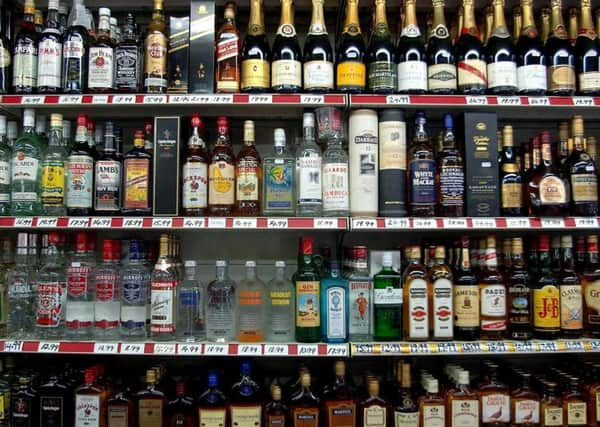Alcohol labels fail to inform public of safe drinking limit


Alcohol brands are failing to inform the public of the drinking guidelines and provide health warnings on labels according to new research.
The findings outlined in a report from the Alcohol Health Alliance (AHA), looked at the information included on alcohol product labels and was carried out in May this year – 15 months after the updated guidelines were launched.
Advertisement
Hide AdAdvertisement
Hide AdResearchers found that, of the 315 product labels reviewed across 27 locations in the UK, only one informed the public of the up-to-date low-risk drinking guideline of 14 units a week.
Where labels did contain information on the guidelines, these guidelines were either out-of-date, or were the guidelines for the Republic of Ireland instead of Scotland.
In addition, researchers found that no labels contained health warnings of the specific illnesses and diseases linked with alcohol.
The low risk drinking guidelines were announced by the UK’s Chief Medical Officers in January 2016.
The guidelines are based on the latest evidence linking alcohol to illnesses like cancer and heart disease, and are designed to enable people to make an informed choice about their drinking.
At present, there are few requirements for what should appear on alcohol product labels. Alcohol producers, under a system of self-regulation, decide what to include.
Releasing their research, the AHA said that tougher rules were needed on alcohol labelling, to make sure alcohol producers inform the public of the health harms linked with their products. Their research has found that 82 per cent of people are not aware of the current alcohol guidelines.
Alcohol Focus Scotland provided The Scotsman with examples of the labelling they would like to see on products sold in Scotland.
Advertisement
Hide AdAdvertisement
Hide AdAlison Douglas, the group’s chief executive, said: “This report clearly shows that relying on alcohol producers to communicate health information isn’t working. Consumers have the right to know what they’re drinking and the risks associated with alcohol consumption. Regularly drinking above the low-risk guidelines of 14 units per week increases the risk of cancer, stroke, liver disease and mental health problems.
She added: “Manufacturers should be compelled to display prominent health warnings, along with information on ingredients, nutrition and calories on alcohol labels.
“The Scottish Government and NHS should be taking the lead in sharing scientific evidence and providing independent health advice, not leaving it to the companies which profit from us drinking more.”
The labelling of alcohol products has been shown to increase awareness of the harms that are associated with drinking.
Alcohol is linked to more than 200 diseases and injury conditions including cancer, heart disease and liver disease.